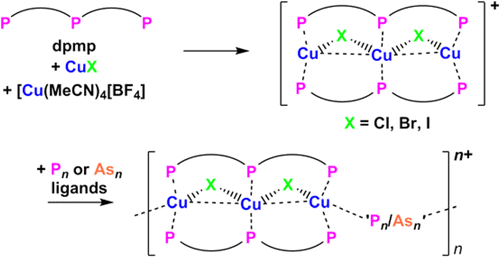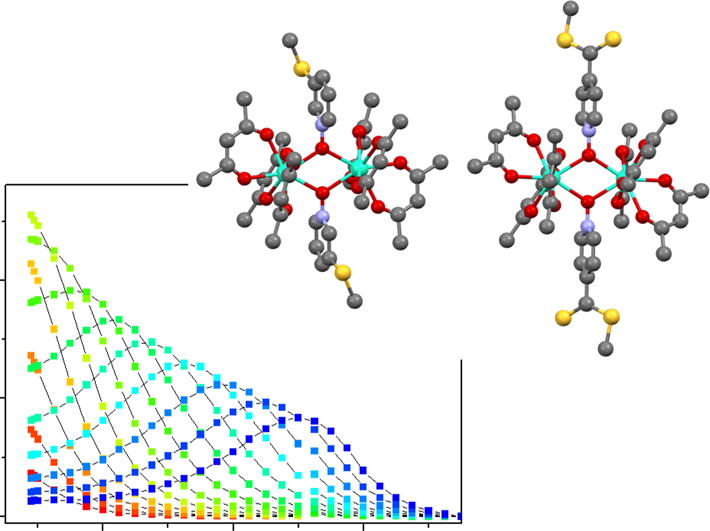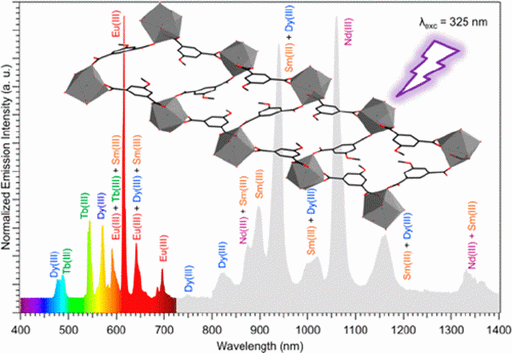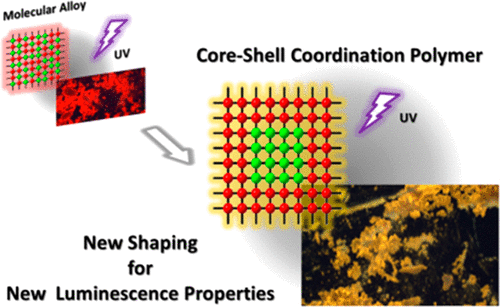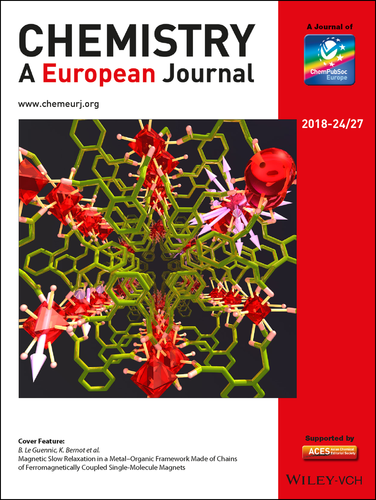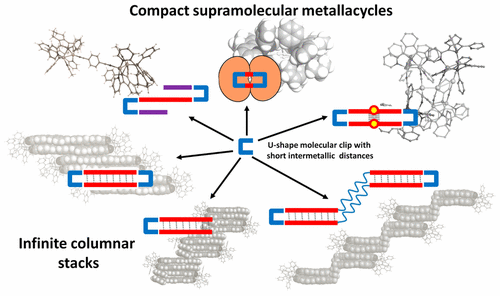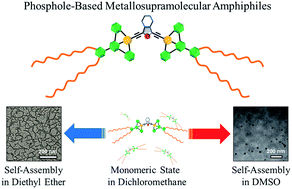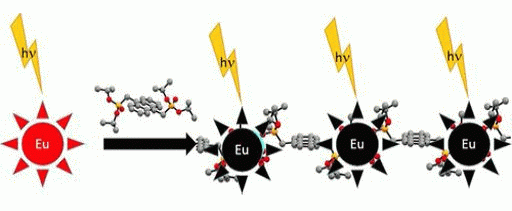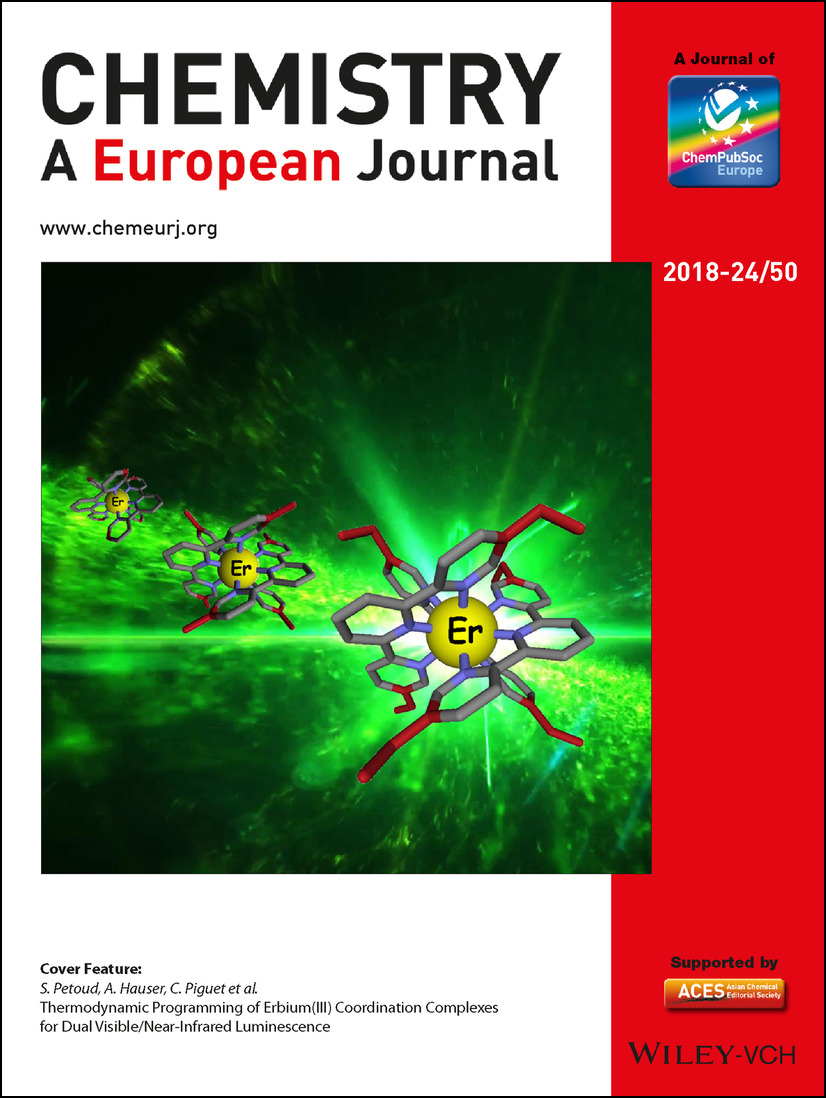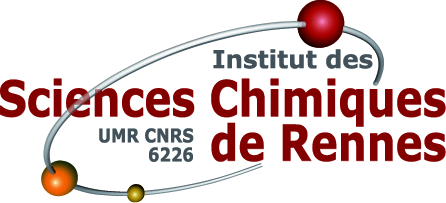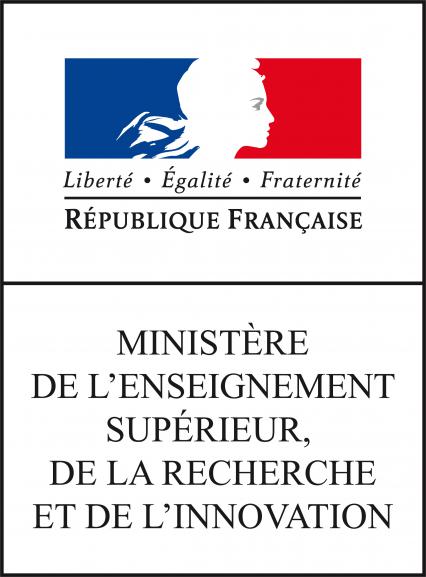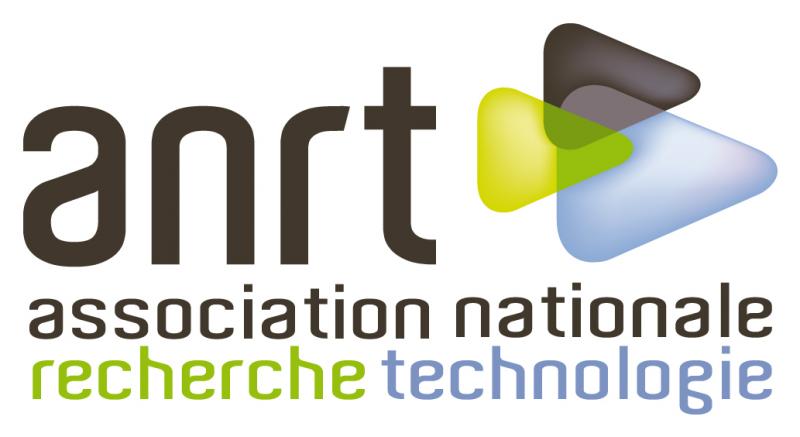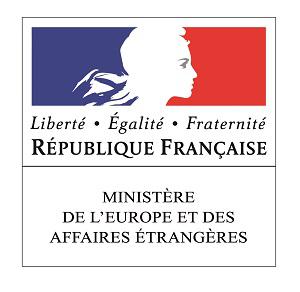Coordination compounds: optic & gas storage
Keywords : coordination chemitry; optical and molecular magnetism properties, porosity; transition elements ; lanthanides
a) Luminescent materials for sensors or taggants
b) Magnetic materials for nanoscale data storage
c) Porous coordination polymers
d) Single molecule magnets thin films
Our team is interested in coordination compounds (complexes or polymers) likely to find their application as luminescent materials for sensors, taggants, storage of molecules or magnetic materials for information storage. To develop this activity, the team relies on two technical platforms: a platform for physical and chemical characterization of materials and a platform for photo physical measurements. These two platforms are attached by convention to the PFT GCM (INSA) and the NanoRennes platforms, respectively. The team also has significant synthesis resources like solvothermal autoclaves, microwave-assisted reactors, under UV irradiation reactors, ultrasound assisted reactors or ball milling for mechanical synthesis as for examples.
a) Luminescent materials for sensors or taggants
Our group has been active in this field for some fifteen years, as evidenced by the creation in 2019 of the INSA/CNRS/Olnica « ChemInTag » (Chemical Inorganic Taggants) joined laboratory, a center in the field of anticounterfeiting taggants.
We have, for example, synthesized and characterized coordination complexes and hetero-poly-lanthanide coordination polymers with particularly intense and tunable luminescence properties, as a function of temperature or excitation wavelength, in the solid and/or the liquid state.


We have also, for the first time, developed the synthesis of microcrystalline powders of core shell type. In this form, the hetero-poly-lanthanide coordination compounds possess photophysical properties that are drastically different from those of the corresponding molecular alloys.
Inorg. Chem. 2015, 54, 5534 ; Inorg. Chem. 2015, 54, 6043 ; Chem. Eur. J. 2015, 21, 17466 ; Inorg. Chem. 2016, 55, 794 ; Acc. Chem. Res. 2016, 49, 844 ; Coord. Chem. Rev. 2017, 340, 134 ; Cryst. Growth Des. 2017, 17(3), 1224 ; Inorg. Chem. 2017, 56, 14632 ; Inorg. Chem. 2018, 57, 3399 ; Inorg. Chem. 2019, 58, 462 ; Inorg. Chem. 2019, 58, 1317 ; Inorg. Chem. 2019, 58, 2659 ; Inorg. Chem. 2019, 58, 16180 ; Brevet FR1853832 (Licensed) (03-05-2018)
An innovative synthetic approach allowing a very general access to new multifunctional and luminescent Cu(I) ion assemblies has been established. Based on the new concept of coordination-guided adaptive supramolecular chemistry, polymetallic Cu(I) luminophores are studied as

providing immediate and quantitative access to a large family of supramolecular assemblies with various crystal structures and multifunctional photo-physical properties that are sometimes enhanced. This work, associated with intense international collaborations (in Germany, Hong Kong, Finland) has also led to a patent related to the development of low-cost materials for the non-destructive thermal testing of technological devices.
Acc. Chem. Res. 2017, 50, 885 ; Chem. Commun. 2016, 52, 11370 ; Angew. Chem. Int. Ed. 2018, 3, 795 ; J. Am. Chem. Soc. 2018, 140, 12521; Inorg. Chem. Front. 2020, 7, 1334; Inorg. Chem. Front. 2020, 7, 3402; Chem. Commun. 2020, 56, 10501; Chem. Record 2021, 544; Org. Chem. Front. 2021, 8, 2893; Inorg. Chem. Front. 2021, 8, 4887; Chem. Eur. J. 2022, doi.org/10.1002/chem.202104497; Brevet EP3820929 (2020)
founded by the ANR (ANR PRC SMAC 2019-2023, ARN PRCI (Germany) SUPRALUM 2020-2023), the CNRS (IEA SupraRE2 2019-2021) and the SATT OUEST Valorisation (Projet de Maturation THERMOLUM 2022-2023)

b) Magnetic materials for nanoscale data storage
Our activities in the field of molecular magnetism concern the study of magnetic molecules and chains based on rare earth ions. They range from the synthesis of new molecules, their crystallogenesis and magnetic characterization, to their deposition on surfaces (lien vers la partie “thin films” de CSM). We also use the luminescence of rare earths to carry out magnetio-luminescent correlations and also to evaluate the degree of purity of the resulting compounds based on nitronyl-nitroxide radicals.

Our activities have involved for a decade strong collaborations within the Institute of Chemical Sciences in Rennes with the Inorganic Theoretical Chemistry team (CTI) (ab initio theoretical approach, B. Le Guennic) and the Organometallics Materials & Catalysis team (OMC) (TTF-based molecules, F. Pointillart; photocommutable molecules (L. Norel). Our good international visibility allowed us to be selected for the organization of the European Congress of Molecular Magnetism (ECMM) in 2022 in Rennes (Chair, K. Bernot).
Nomination IUF Junior (K. Bernot) ; Chem. Eur. J. 2018, 24, 6983 ; Inorg. Chem. 2018, 57, 11044 ; Inorg. Chem. 2017, 56, 6788 ; Inorg. Chem. 2015, 54, 5213 ; Lanthanides and Actinides in Molecular Magnetism ; Wiley-VCH Verlag GmbH & Co. KGaA: 2015, p 89-124 ; Special issue: Molecular Magnetism of Lanthanides Complexes and Networks Magnetochemistry 2017, 3 ; Techniques de l’Ingénieur 2019, re277. This acticity has been supported by the research network Rennes-PICS Florence (2018-2020), CNRS project EMERGENCE@INC, Boost’ERC from Région Bretagne and Institut Universitaire de France (K. Bernot IUF Junior).
retour au titre
c) Porous coordination polymers
Our activities concern the design of new porous frameworks and the rationalization of the topologies related to the geometry of the building units. In collaboration with the Condensed Matter and Electroactive System Team (MACSE), we have synthesized various chiral copper (II) fluorenes, which have a blue emission and for some of them with good CO2 and CH4 storage properties. We have also synthesized carboxylate or imidazolate-based 3d/4f coordination polymers with antiferromagnetic or ferromagnetic coordination polymers and sometimes with selective catalytic properties.

Finally, we have initiated for some years the study of the diffusion phenomena of guest molecules within rigid or flexible porous host structures (MOFs materials) through a multiscale approach combining pulsed field gradient (PFG) solid state NMR spectroscopy, in situ X-ray diffraction and molecular modelling. We have highlighted in the flexible NH2-MIL-53(Al) MOF the existence of an unprecedented very large pore phase when methanol is used as guest molecules.
CrystEngComm. 2017, 19, 2042 ; Cryst. Growth Des. 2019, 19, 7055 ; New J. Chem. 2019, 43, 11057 ; J. Phys. Chem. Lett. 2019, 10, 1698
retour au titre
d) Single molecule magnet thin films
In the field of lanthanide-based single molecule magnets, we synthesized luminescent and sublimable single molecule magnets usable to design luminescent or magnetic devices.


In the first case, a collaboration with co-workers from Ningbo Institute of Science (China) lead to the making of a device in which the luminescence of a single molecule magnet thin film is controlled by the electron-inducted ionic migration.
In the second case, a strong collaboration with Italian co-workers (from the previously cited research network Rennes-PICS Florence) lead to a single molecule magnet thin film in which the single molecule magnets keep their magnetic properties. The fact was proven using two large scientific instruments located at Paul Scherrer Institute (PSI) in Switzerland: a muon spectrometer and a low-energy muon spectrometer, unique in the world, dedicated to surfaces. We are still developing efficient molecules in this field, for some of them with local partnership.
ACS Appl. Mater. Inter. 2016, 8, 15551 ; ACS Nano 2016, 10, 5663 ; Eur. J. Inorg. Chem. 2018, (3-4), 326 ; Polyhedron 2019, 164, 41 ; Chem. Commun. 2018, 54, 7826
retour au titre

